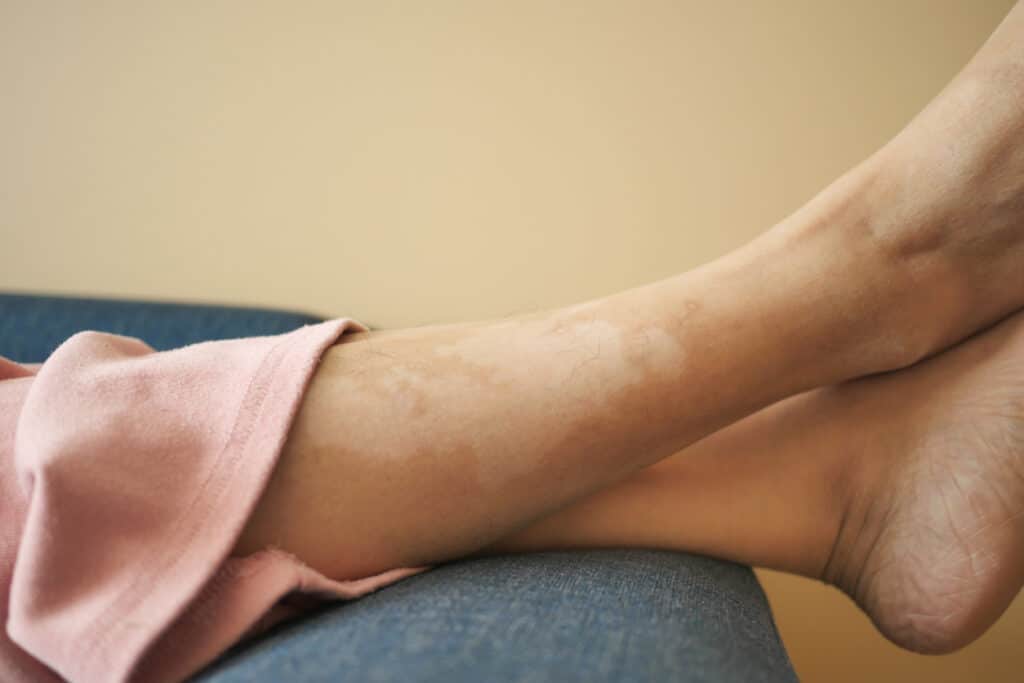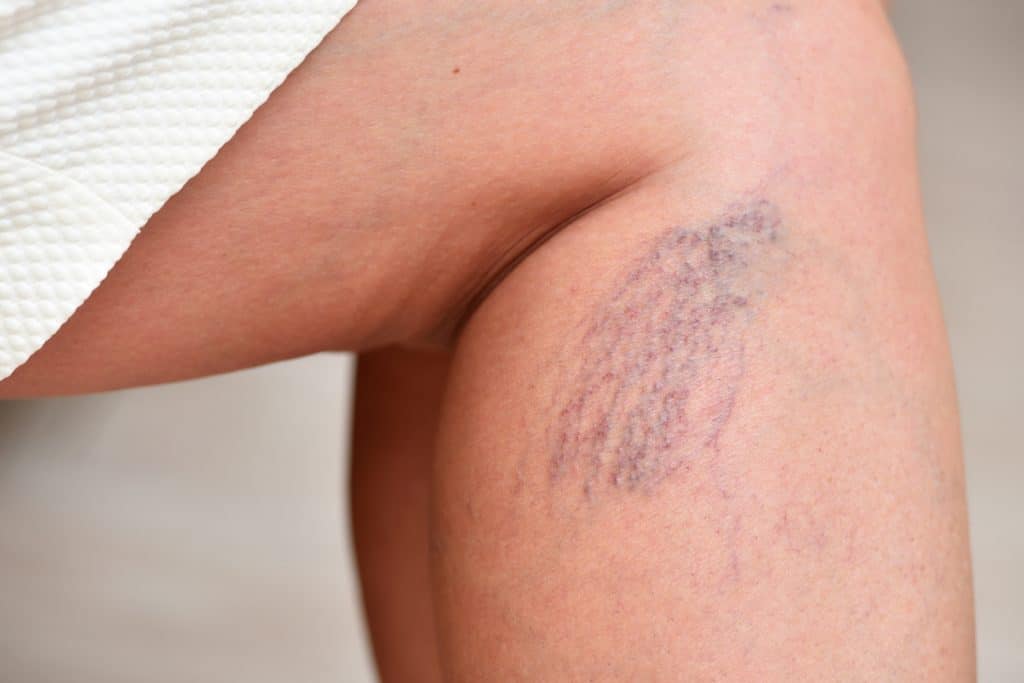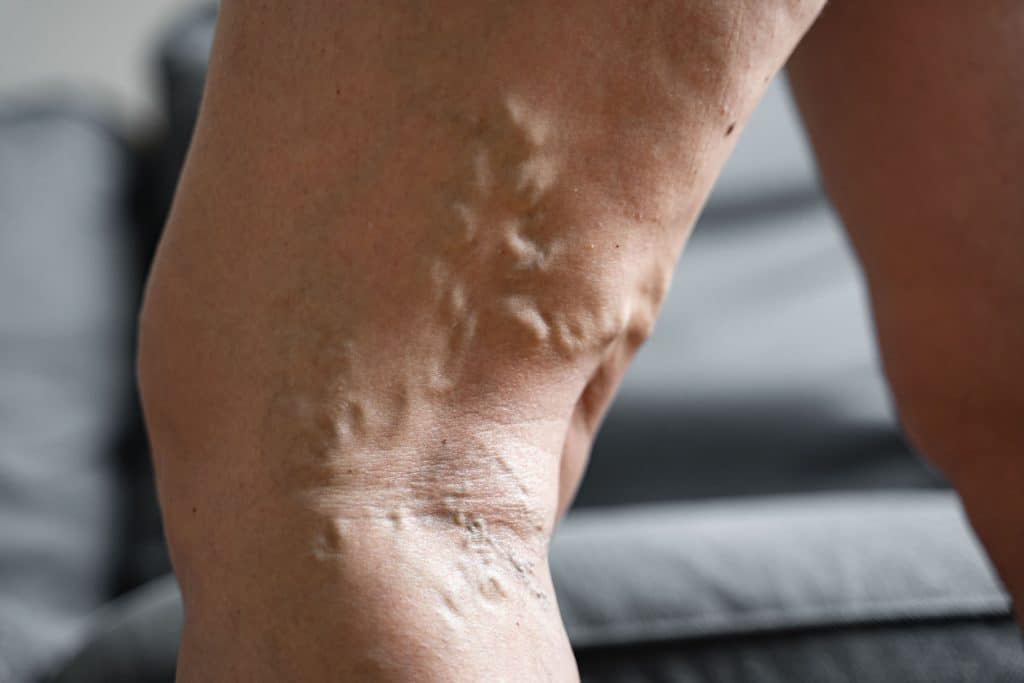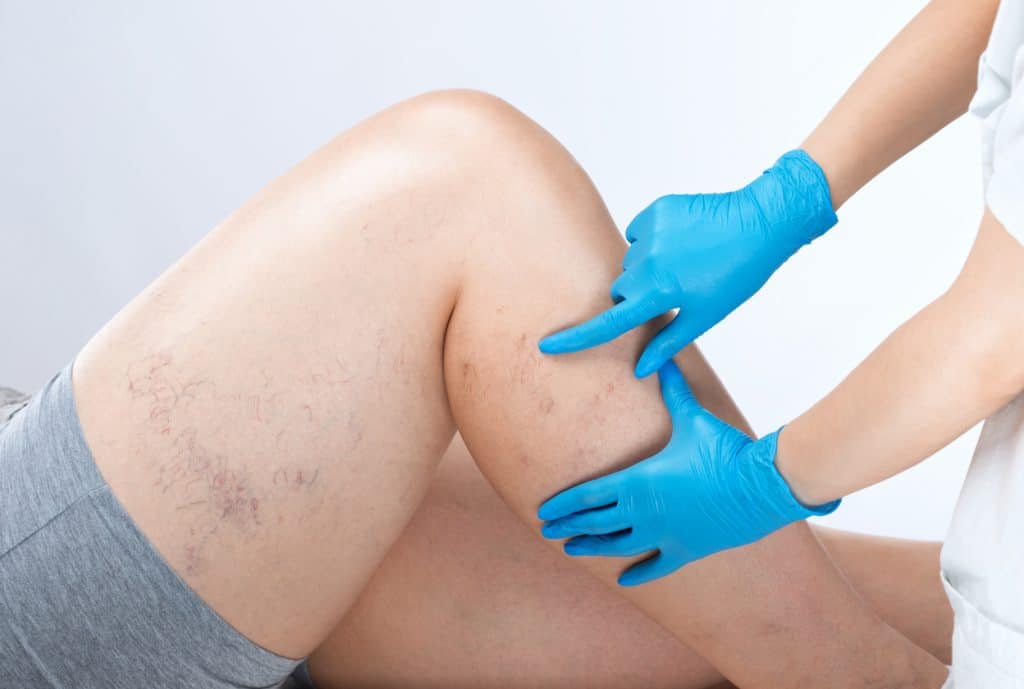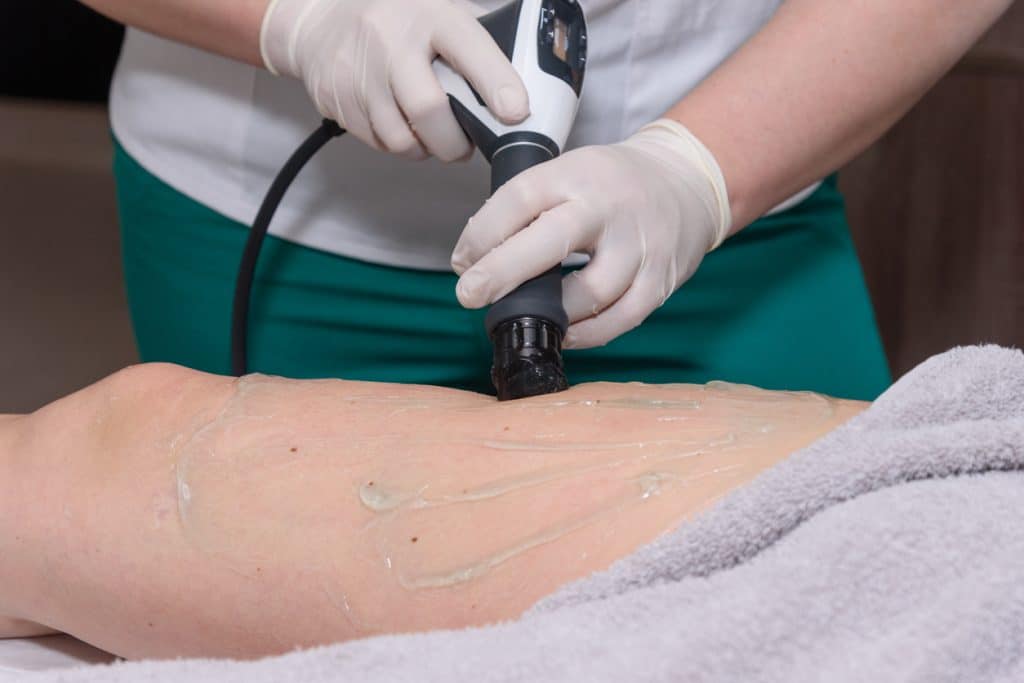Leg Pigmentation Changes: The Hidden Signs of Venous Stasis Dermatitis
Experiencing changes in the skin’s tone, color, or texture on your legs can be more than just a cosmetic issue—it might be an early warning sign of underlying vein diseases like Venous Stasis Dermatitis. These transformations in your skin, ranging from slight discoloration to marked pigmentation differences, often stem from poor circulation and can signal serious health concerns. Across the United States, countless individuals face these troubling skin conditions daily, not realizing that these visible changes are often the body’s cry for help against potential circulatory system disorders. Recognizing these signs can be the first crucial step toward safeguarding your vein health and overall well-being.
What Is Leg Discoloration
Leg pigmentation changes, often called venous stasis dermatitis, manifest through changes in the skin color on the feet or lower legs. They stem from underlying circulation issues. This condition arises when the leg veins struggle to pump blood back to the heart effectively, leading to blood accumulation in the legs. The increased pressure allows fluids and blood cells to seep into nearby tissues, causing swelling, inflammation, and skin color changes.
The shift in skin color may vary from a light reddish-brown to a deep purple and is usually linked with chronic venous insufficiency (CVI) or deep vein thrombosis (DVT). Those with reduced circulation, whether from lifestyle choices or preexisting health conditions, are especially susceptible to these changes. Without proper treatment, leg discoloration can progress and give rise to more critical conditions, such as skin ulcers and infections, which pose more significant treatment challenges.
Grasping the underlying causes, risk factors, and indicators of leg discoloration is crucial for effectively managing this condition, thereby enhancing one’s overall quality of life.
Understanding the Causes of Leg Pigmentation Changes
Leg pigmentation changes, characterized by alterations in skin color on the lower extremities, often indicate underlying health conditions. Among the most common causes is venous insufficiency, which occurs when veins struggle to transport blood back to the heart effectively. This section delves into the various factors contributing to this condition and subsequent vascular discoloration.
Age-Related Changes
As individuals age, the veins in the legs may lose elasticity, impairing the function of one-way valves designed to promote the upward flow of blood towards the heart. This deterioration can lead to blood pooling, manifesting as leg discoloration.
Impact of Excess Weight
Excessive body weight increases the pressure exerted on leg veins, complicating the circulation of blood. Persistent pressure may exacerbate venous insufficiency, heightening the risk of discoloration over time.
Risks Associated with Immobility
Prolonged periods of sitting or standing can adversely affect blood circulation. Active movement is essential as calf muscles play a crucial role in aiding blood flow back to the heart. Lack of movement can, therefore, increase venous pressure and cause discoloration.
Varicose Veins
Often dismissed as merely cosmetic, varicose veins can be a red flag indicating compromised vein functionality. These veins can pool blood in the legs, contributing to visible leg discoloration.
Blood Clots (Deep Vein Thrombosis)
Deep Vein Thrombosis (DVT) involves the formation of blood clots in deep veins. These clots can obstruct proper blood flow and result in leg swelling and discoloration. DVT is serious and demands prompt medical intervention.
Changes During Pregnancy
Pregnancy introduces additional weight and hormonal shifts that can weaken vein walls, fostering blood pooling and resulting in leg discoloration.
Cardiac and Renal Factors
Heart and kidney diseases can also precipitate leg discoloration due to their influence on circulation. Impairments in these systems may lead to inadequate blood and fluid circulation, contributing to this condition.
Identifying and addressing these causative factors is crucial for effectively managing and treating leg pigmentation changes, aiming to improve the appearance and underlying vein health.
Symptoms of Venous Insufficiency and Skin Conditions
Common symptoms include red, brown, or purple skin discoloration, irritation, hard and leathery patches, and, in severe cases, open sores or ulcers. These changes can signify several possible conditions, including critical Venous Stasis Dermatitis.
Knowing When to Seek Medical Advice for Leg Discoloration
Leg discoloration is more than just a superficial concern; it can be a window to your overall vascular health. Knowing when to consult a doctor can be pivotal in managing potential underlying conditions before they progress. If you observe any changes in the coloration of your legs, especially if other symptoms accompany them, seeking medical attention is crucial.
Symptoms Warranting a Doctor’s Visit
- Persistent Leg Swelling: If your legs become swollen over extended periods, this could signal poor blood circulation or other severe vascular issues.
- Changes in Skin Color: Pay attention to any darkening or reddening of the skin, particularly around the ankles. This could be a sign of advanced venous insufficiency.
- Unusual Skin Texture: Itchy, scaly skin on the legs is abnormal and could indicate dermatological conditions or poor blood flow.
- Pain or Discomfort: Any persistent or severe pain in the lower legs, especially when walking or standing, should prompt an immediate doctor’s visit.
- Visible Veins: The emergence of varicose or spider veins can often be more than a cosmetic concern; it indicates compromised vein health.
The Importance of Early Medical Intervention
Addressing these symptoms early with your healthcare provider can prevent the progression of potentially serious conditions. A primary care physician may conduct a preliminary assessment and, if necessary, refer you to a vascular specialist for further evaluation. This specialist can pinpoint the underlying causes of your leg discoloration and recommend appropriate treatment options.
Effectively managing leg discoloration requires understanding its potential implications for overall health. By being vigilant about changes in your legs and seeking medical advice promptly, you can maintain your vascular health and quality of life.
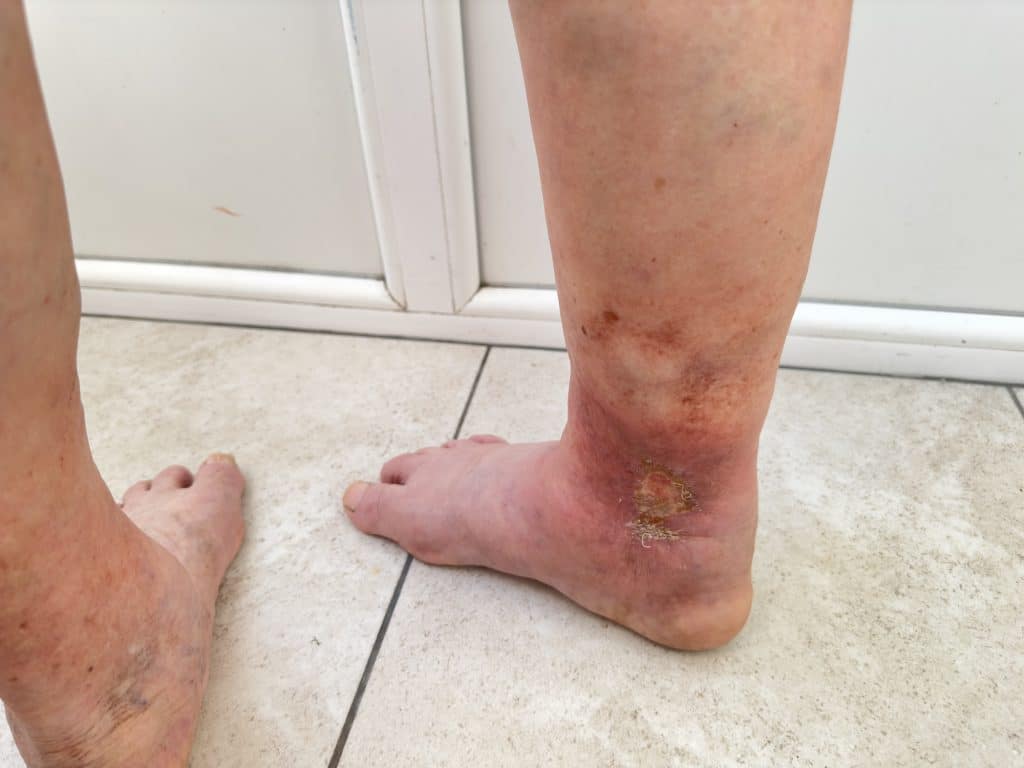
Venous Stasis Dermatitis: A Closer Look
Venous Stasis Dermatitis, also known as venous eczema, manifests typically in the lower legs where blood circulation inefficiency is most pronounced. This condition emerges due to venous pressure buildup, leading to symptoms ranging from inflamed, itchy skin to painful swelling. Even without visible varicose veins, anyone over 50 can develop this condition, signaling possibly more severe vein diseases like Chronic Venous Insufficiency (CVI).
Other Related Conditions
- Hemosiderin Deposits: Purple or brown bruises appearing on your legs due to iron deposits from blood pooling.
- Varicose Veins: Visibly swollen veins leading to pain and skin discoloration if blood leaks into surrounding tissues.
- Spider Veins: These surface-level veins can cause significant skin discoloration, appearing in web-like patterns.
- Skin Ulcers: These open wounds result from poor circulatory health and are challenging to heal and slow to recover.
Understanding Non-Vascular Causes of Leg Discoloration
Leg discoloration is not always linked to vascular problems. It can often be attributed to various skin conditions, metabolic disorders, or inflammatory processes. Recognizing these causes can guide you to seek appropriate care and understand the implications of these conditions on your overall health.
Non-Vascular Factors Leading to Leg Discoloration:
- Trauma and Bruising: Impact or injury can lead to bruising which presents as red or purple marks. As the bruise heals, it may change color, progressing through shades of yellow or green.
- Inflammatory Skin Conditions:
- Eczema and Psoriasis: Both conditions can cause persistent red, brown, or purple patches, which may remain long after the inflammation subsides.
- Post-inflammatory Hyperpigmentation: After skin inflammation due to eczema, psoriasis, or infections, you might observe darker patches on your skin.
- Allergic Reactions:
- Contact Dermatitis: Exposure to allergens can result in skin redness and varied discoloration.
- Cold-induced Changes:
- Livedo Reticularis: This condition causes a net-like pattern of purplish discoloration. It typically results from reduced blood flow, often triggered by cold temperatures.
- Infections:
- Cellulitis and Fungal Infections: These conditions can cause significant redness and darkening of the skin.
- Pigmentation Disorders:
- Vitiligo: Characterized by white patches resulting from loss of pigment.
- Acanthosis Nigricans: This presents as darkened, velvety skin primarily occurring in body folds and creases, commonly associated with insulin resistance.
- Skin Cancers:
- Melanoma and Other Skin Cancers: Any dark spots that change over time could potentially be cancerous and should be evaluated urgently.
When to Consult a Healthcare Provider
Any persistent changes in the color or texture of your leg skin warrant a consultation with a healthcare provider. While some discolorations may be benign, caused by bruises or mild allergic reactions, others might signal severe health conditions requiring treatment. Persistent or worsening skin changes, particularly those involving unusual patterns of color change, unexplained sores, or lesions that alter in appearance, should prompt immediate medical evaluation.
By being aware of these non-vascular contributors to leg discoloration, individuals can seek timely medical advice and promptly address any significant health issues.
Is Venous Stasis Dermatitis Serious?
Venous stasis dermatitis is often seen as an early sign of chronic venous insufficiency, a long-term circulation problem in the legs. While it may first appear as a cosmetic issue, if left untreated, it can potentially lead to far more severe health concerns.
Although at-home treatments can alleviate symptoms, they are inadequate as a sole solution. Consider these methods as supplementary to professional medical treatment:
- Compression Stockings: These garments help maintain blood flow and reduce the leg swelling.
- Leg Elevation: Regularly elevating the legs above heart level can reduce swelling and improve circulation.
- Regular Exercise: Walking or swimming boost circulation and help manage symptoms.
- Moisturizing: Frequent moisturizing can prevent dryness and soothe irritated skin.
Venous stasis dermatitis is a potentially mild condition that can lead to severe complications. Therefore, avoiding relying on home remedies and seeking medical advice early is imperative. Effective management involves addressing the symptoms and treating the underlying vascular issues to prevent progression and improve quality of life. Regular follow-ups with a healthcare provider specialized in vascular health will ensure the best care tailored to your condition.
Medical Treatment Options for Venous Stasis Dermatitis
Venous stasis dermatitis, a condition resulting from poor leg circulation and characterized by skin discoloration, requires focused medical intervention. The treatment choice largely depends on the underlying cause, the severity of your condition, and your overall health status. Here are some of the primary medical treatment options available:
Radiofrequency Ablation (RFA)
This minimally invasive procedure is often recommended for treating varicose veins, a common cause behind venous stasis dermatitis. It involves using radiofrequency energy to heat up and damage the walls of the dysfunctional vein. This leads to the closure of the vein, with blood flow being rerouted to healthier veins. Over time, the body absorbs the treated vein, and discoloration gradually improves.
Sclerotherapy
Sclerotherapy is effective for smaller varicose and spider veins. The procedure involves injecting a sclerosing agent directly into the problematic vein. This solution irritates the vein’s lining, causing it to collapse and stick together. Over time, the vein turns into scar tissue and fades. Depending on the size and number of veins treated, multiple sessions may be required.
Compression Therapy
Compression therapy is often one of the first recommended treatments. Usually, Compression stocking or wrap is used to exert pressure on the legs, significantly improving blood flow. This helps reduce leg swelling and discomfort and prevents blood from pooling in the vein, which is crucial for managing and alleviating venous stasis dermatitis symptoms.
Medications
In cases where blood clots complicate venous stasis dermatitis, your doctor may prescribe anticoagulants (blood thinners). Medications such as warfarin or heparin can prevent new clots from forming and existing clots from getting larger, thereby improving blood flow and reducing the risk of potentially life-threatening complications.
Topical Treatments
Topical treatments can provide relief for skin issues associated with venous stasis dermatitis. Steroid creams may be prescribed to reduce inflammation and itching. Additionally, topical or oral antihistamines can help manage the itchiness associated with the condition. It’s important to follow your doctor’s guidance on the appropriate use of these treatments to avoid potential side effects from excessive or prolonged use.
Seeking Help
If you’re experiencing leg pigmentation changes or symptoms associated with Venous Stasis Dermatitis or other vein-related conditions, it’s time to consult a vein specialist. Prompt action and expert guidance are your best defense against these potentially debilitating issues. At Coastal Vascular Center, we’re equipped to evaluate and treat venous insufficiency, guiding you toward healthier legs and improved overall well-being.
Our team, led by Dr. Ayar, provides top-tier care for all patients experiencing venous conditions. Contact us today to learn how we can help you manage and overcome leg pigmentation issues, ensuring your legs look better and feel better.


